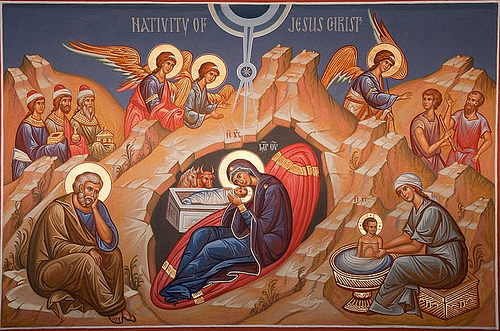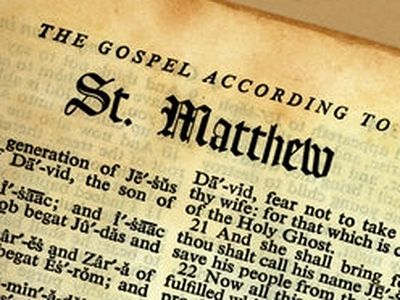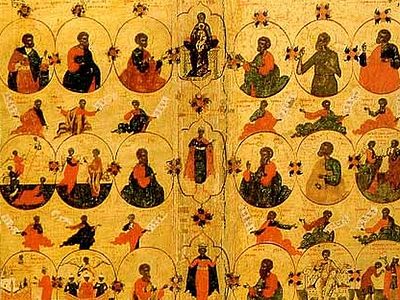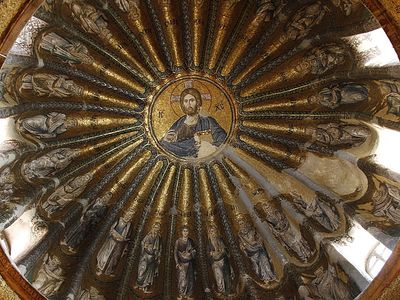Looking at one of the liturgical hymns from the Feast of the Nativity of Christ, we see themes that are obvious throughout the Christmas cycle of services. The hymns from the Orthodox services for the Nativity are heavily theological focusing on the lessons the Ecumenical Councils derived from the Scriptures and God’s revelation in Jesus Christ.

The hymns teach a Trinitarian God, one person of the Trinity – God the Word – became incarnate as Jesus on earth, this incarnation restores the proper relationship between God and humanity, between heaven and earth, between material creation and the spiritual life, in fact it restores all proper relationships in God’s creation with the Creator and between humanity and the rest of creation.
Today, He who holds the whole creation in His hand is born of a Virgin.
[In most of the Orthodox Feasts of Christ we encounter hymns that keep the events of Christ’s life in the present: “TODAY, the Eternal One, the Creator does …..” Liturgically, we enter into the event being celebrated, today, and that event is made present in our lives, today. When the Eternal One enters time, time is transfigured and no longer truly has a past and a future. It is the eternal now, always accessible to believers. Jesus is the 2nd Person of the Holy Trinity who became incarnate in time in our world. This is the central mystery of faith: God brings creation (that which is “not God” into existence and then God enters into and becomes “not God” simultaneously lifting creation (that which is “not God”) into union with God or making us God. “God became human so that humans might become God,” as St. Irenaeus said. The incarnation of God means the theosis of humans. It is God who blurs the lines between divinity and humanity, yet the Three Persons of the Trinity are not changed by this, nor is anything added to the Trinity. Each of us retains our human personhood, and we do not disappear into divinity. Rather, divine love transforms our relationship with our Creator, making all things new.]
He whose essence none can touch is bound in swaddling-clothes as a mortal man.
God, who in the beginning fashioned the heavens, lies in a manger.
[The hymn repeats the central truth and mystery in several ways. God has become incarnate as a little child – this is the mystery and revelation of Christmas.]
He who rained manna on His people in the wilderness is fed on milk from his mother’s breast.
[Orthodoxy believes the many manifestations of God in the Old Testament were actually encounters with the pre-Incarnate Christ. It is the pre-Incarnate Christ who appeared anthropomorphically to the Israelites. Christ who performed the miracles of the Old Covenant history now enters into history as a babe born of the Virgin.]
The Bridegroom of the Church summons the wise men;
The Son of the virgin accepts their gifts.
[Christ as God not only interacted with the Israelites in their history, as co-Creator of the universe, Christ has been interacting with all people on earth. God’s Word has been known in one form or another by all people. This knowledge of God’s Word was often in shadows or known only darkly, but that knowledge even is made clear for those who find Christ. The hymn acknowledges that it is Christ Himself, One of the Holy Trinity, who summoned the Magi to seek Him and worship Him. As God, Christ summons the Magi. As the incarnate God, still a baby, He accepts the gifts offered in homage to Him.]
We worship Your birth, O Christ.
Show us also Your Holy Theophany.
[In the Church, as important as the Nativity of Christ is for the salvation of the world, it is also part of the great mystery of God revealed in and through Jesus Christ. The Trinitarian nature of God becomes manifest at Christ’s baptism. The Theophany is the full revelation of Christmas.]



